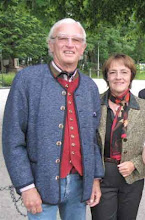- by Jamie Arbuckle, presented to the Workshops on Diversity and Global Understanding, Vienna 2 June 2010
Introduction
A thoroughly modern complex humanitarian emergency typically is a multi-agency operation, involving a vasty array of organizations: international, regional, local; governmental, non-governmental; civilian and military. All have a contribution to make, and some will be vital, but none of them can work alone. Meshing their capabilities to avoid duplications and omissions, is a major challenge for what, begging your pardon and for lack of any better term, I will call the international community. Collectively, they pose a staggering range of diversity, and they present the most complex operating environment I have ever encountered. It is therefore on this, the humanitarian emergency, on which I will now focus. The challenges arising from the organizational and cultural diversity of international and local actors in this type of peace operation are poorly understood, but the problems are so well-known as to have become like Dr Johnson said of the weather: more productive of conversation than of knowledge.
Thomas Weiss has described one well-known example of this complexity in the following words:
Last week (1994), I was talking to a couple of colleagues just back from Kigali. I learned that there are at least 150 international NGOS in Kigali tripping over one another, vying for turf, looking for resources. I have described this effort as like trying to herd cats. (1)
Actually, Weiss’ information was not quite accurate: others subsequently estimated at least twice that number of NGOs in Kigali in 1994 – but no one was quite sure. Five years later, in Kosovo, which is a box about 100 kilometres on a side, some estimated there were about 500 NGOs in the province – but no one was quite sure. And this was in a mission area more or less dominated by the UN, leading the “four pillars” (if you can lead a pillar) of the United Nations Secretariat, the UN High Commission for Refugees, the OSCE, the EU and, as an adjunct, the NATO-led KFOR. The landscape was crowded – especially on that moral high ground - and the architecture was ad hoc and complex.
While the UNMIK operation in Kosovo did eventually sort itself into a climate of reasonable cooperation among the various agencies and with the emerging local government, it will be no surprise that this is more usually a recipe for organizational nightmares.
In this paper, I will describe the problems of interagency communication and cooperation as I have experienced them, and as they have been related to me. Following this description of the problem I will present a short analysis of the origins of the problems, and I will provide a very brief prescription for alleviating these symptoms of disarray. Description, analysis, prescription, then: shut up, and leave time for me to hear from you.
I am constantly reminded that this is as much a learning experience for me as it is for you, and just before lunch I met one of your number who will in the course of this summer do exactly what I am recommending everyone of you should do – I'll tell you more about him as I get to the end of this presentation.
Sunday, June 6, 2010
Subscribe to:
Posts (Atom)

